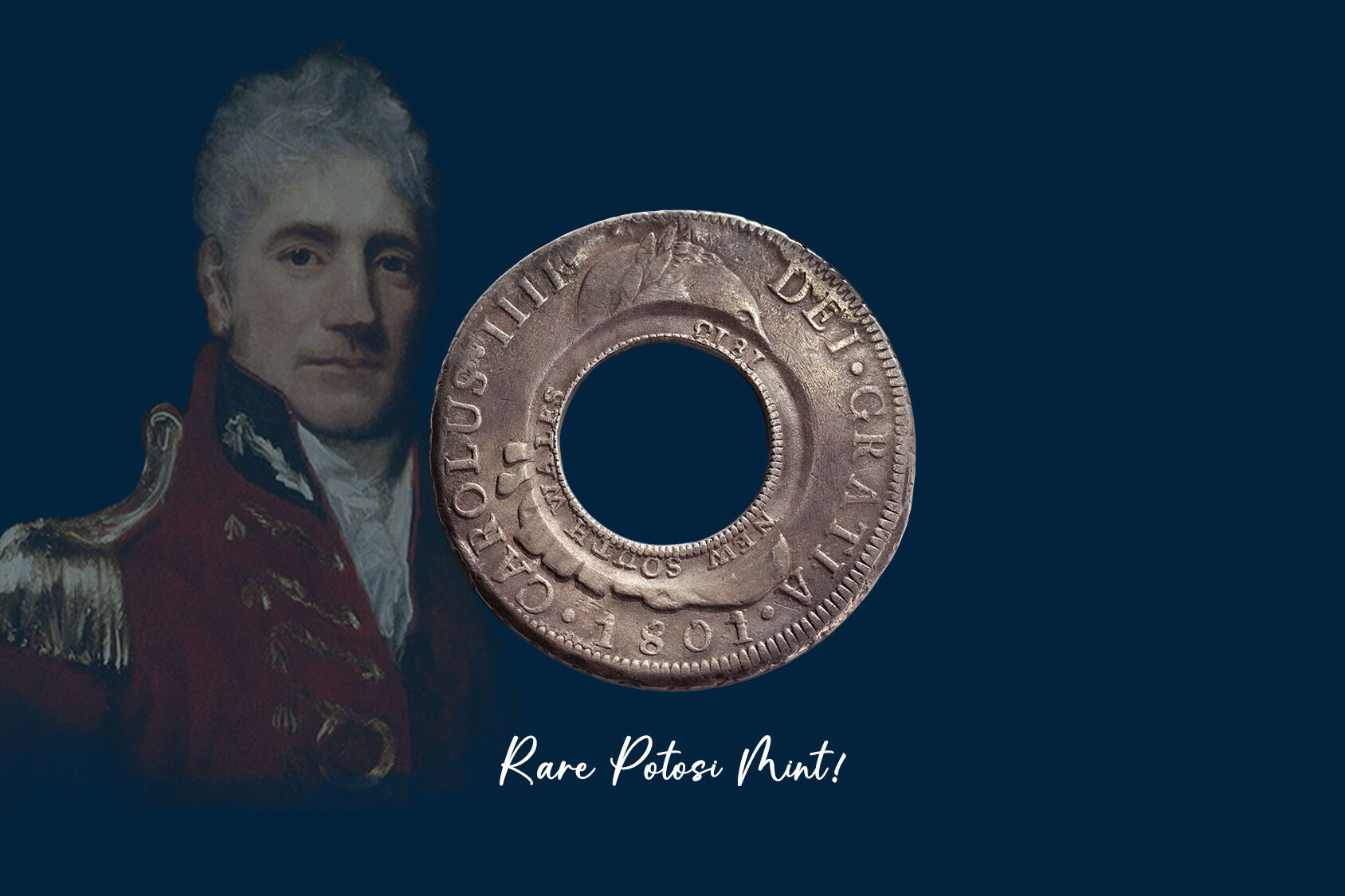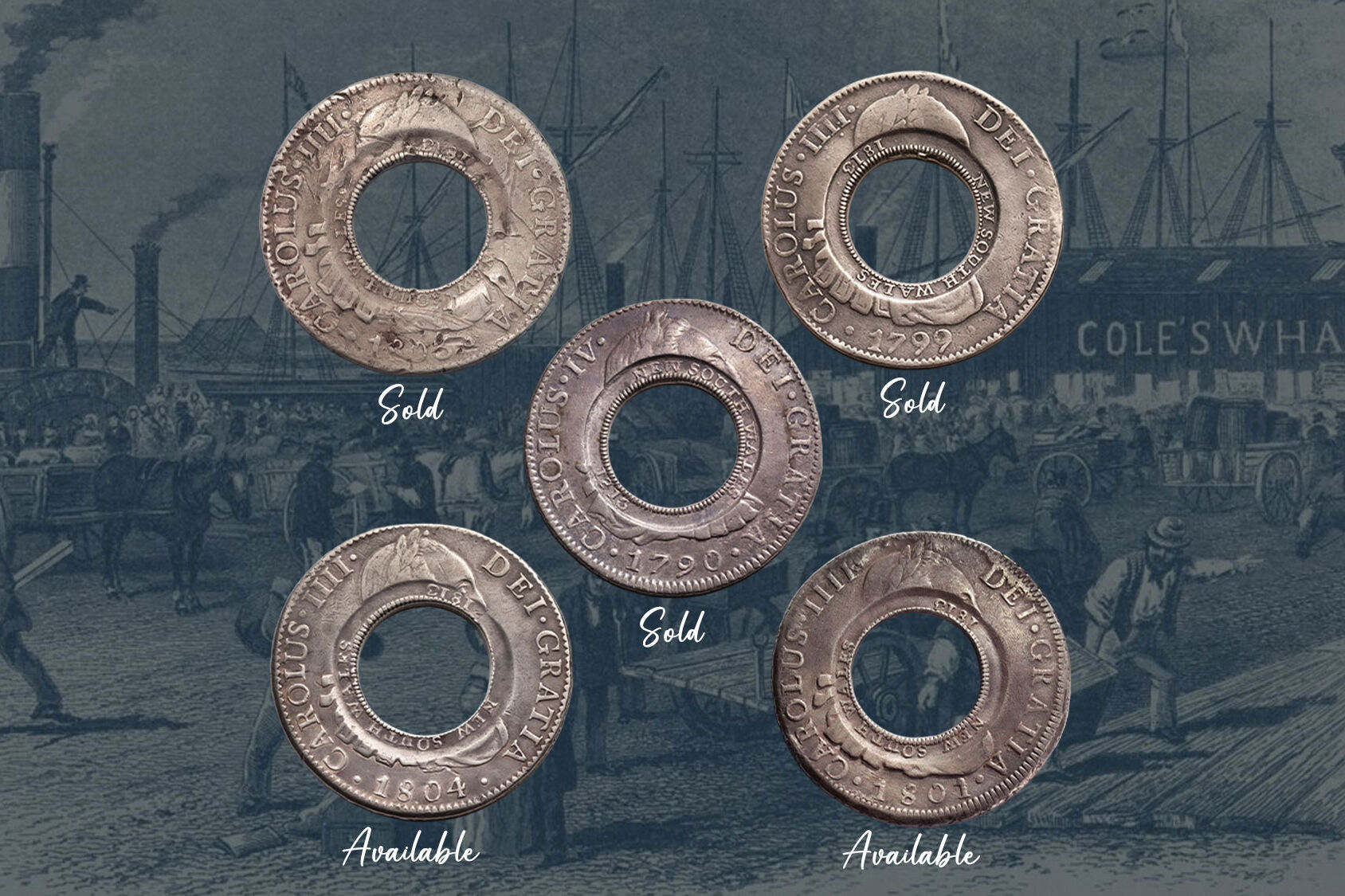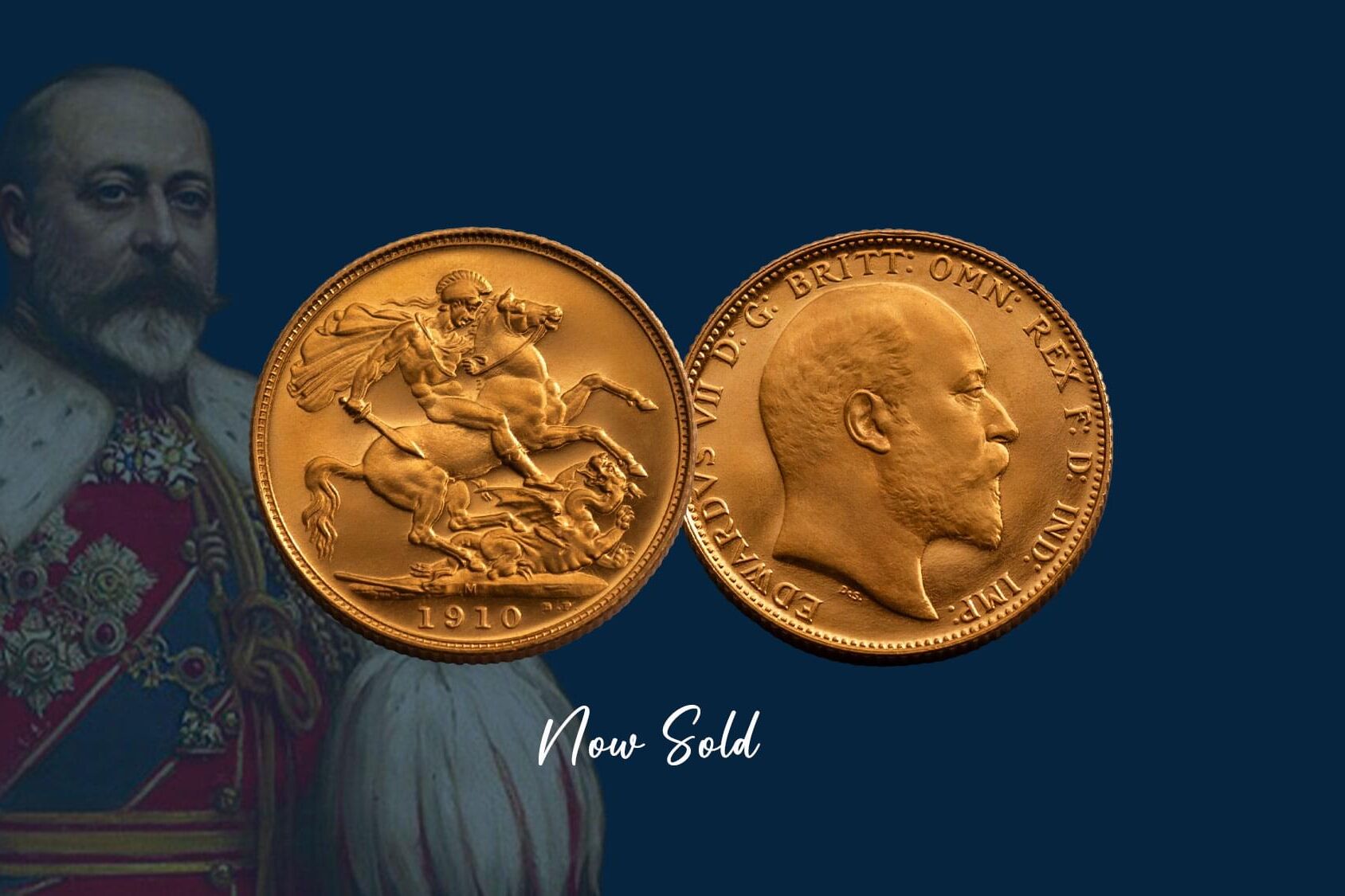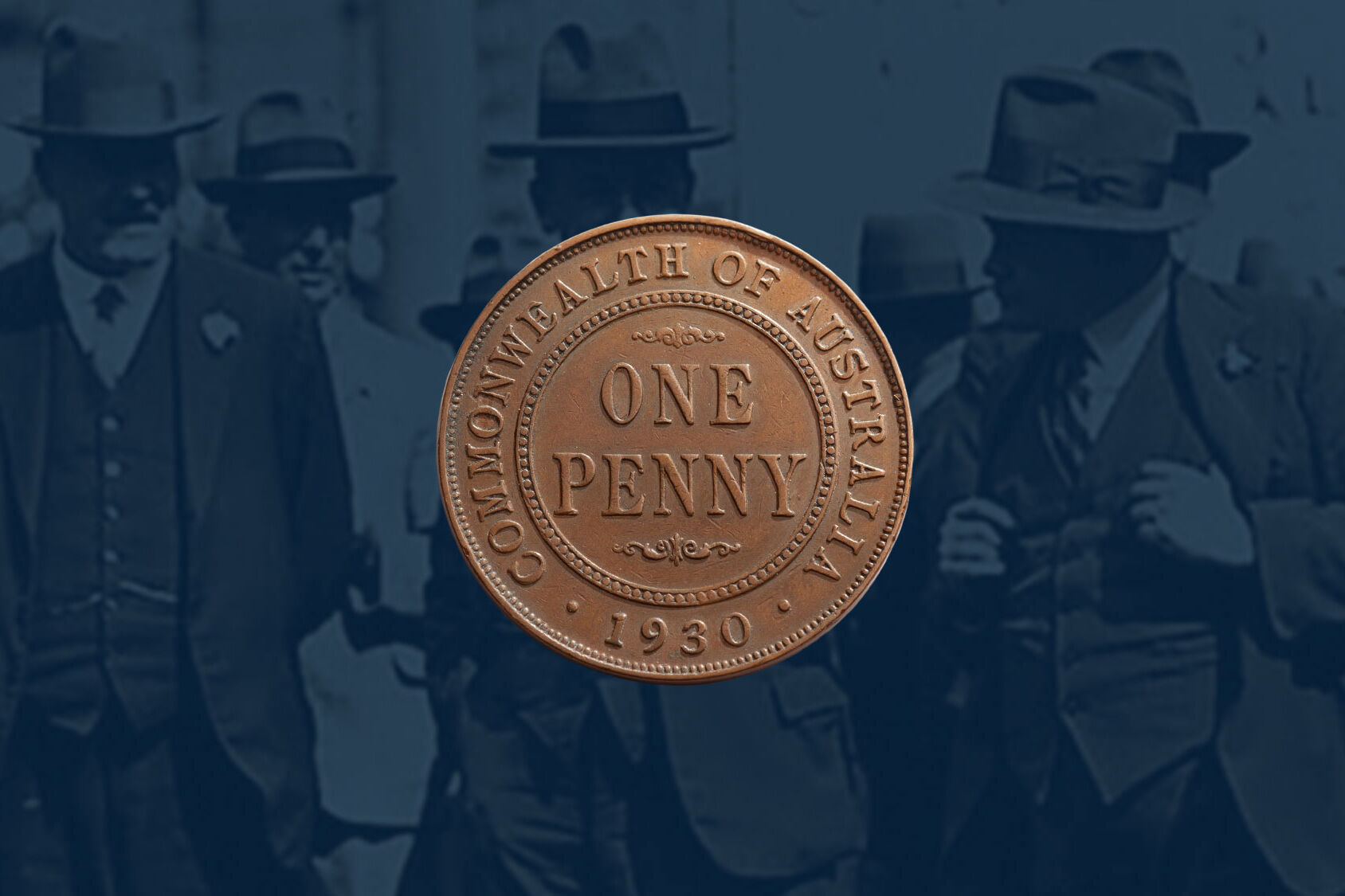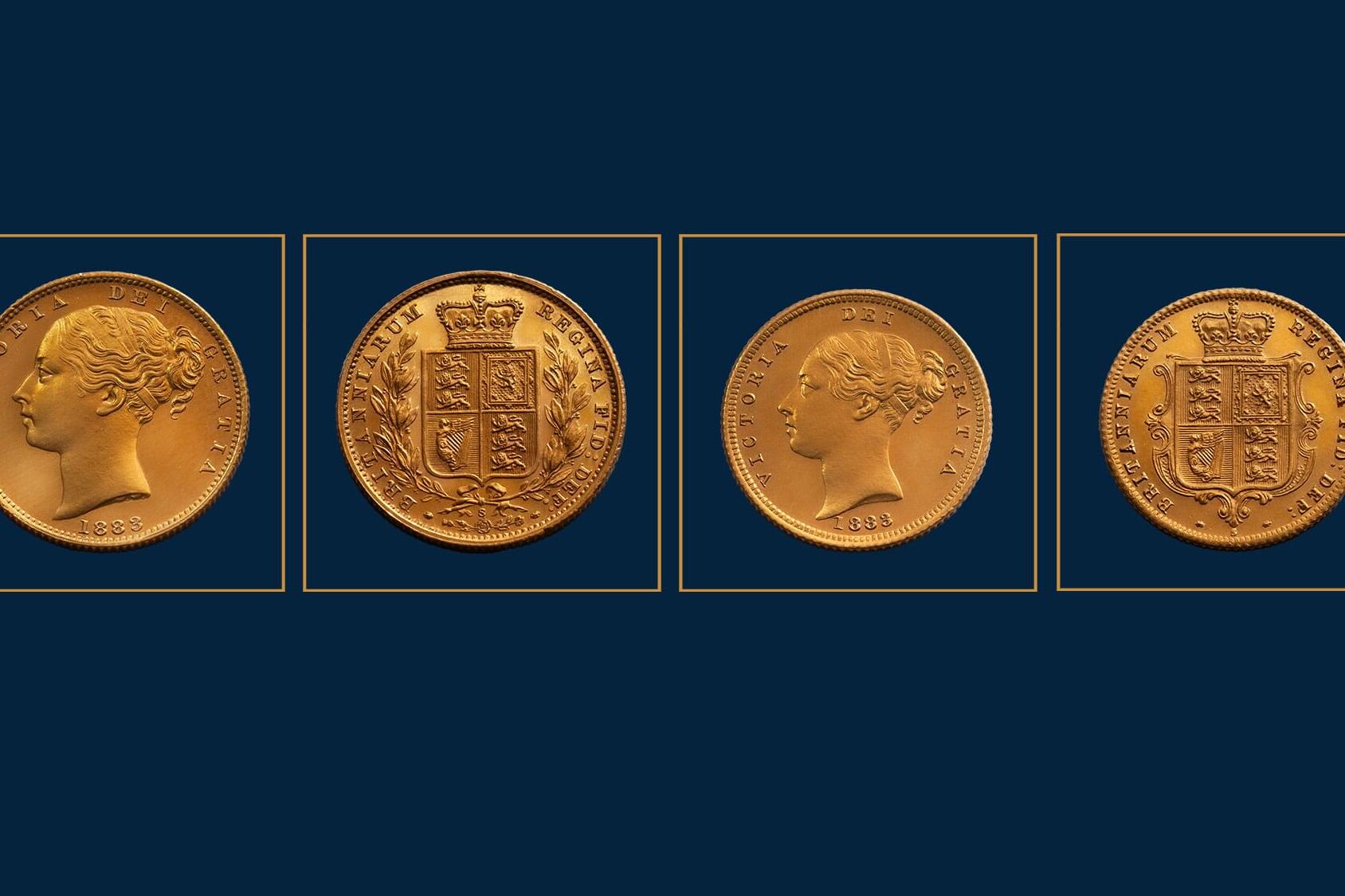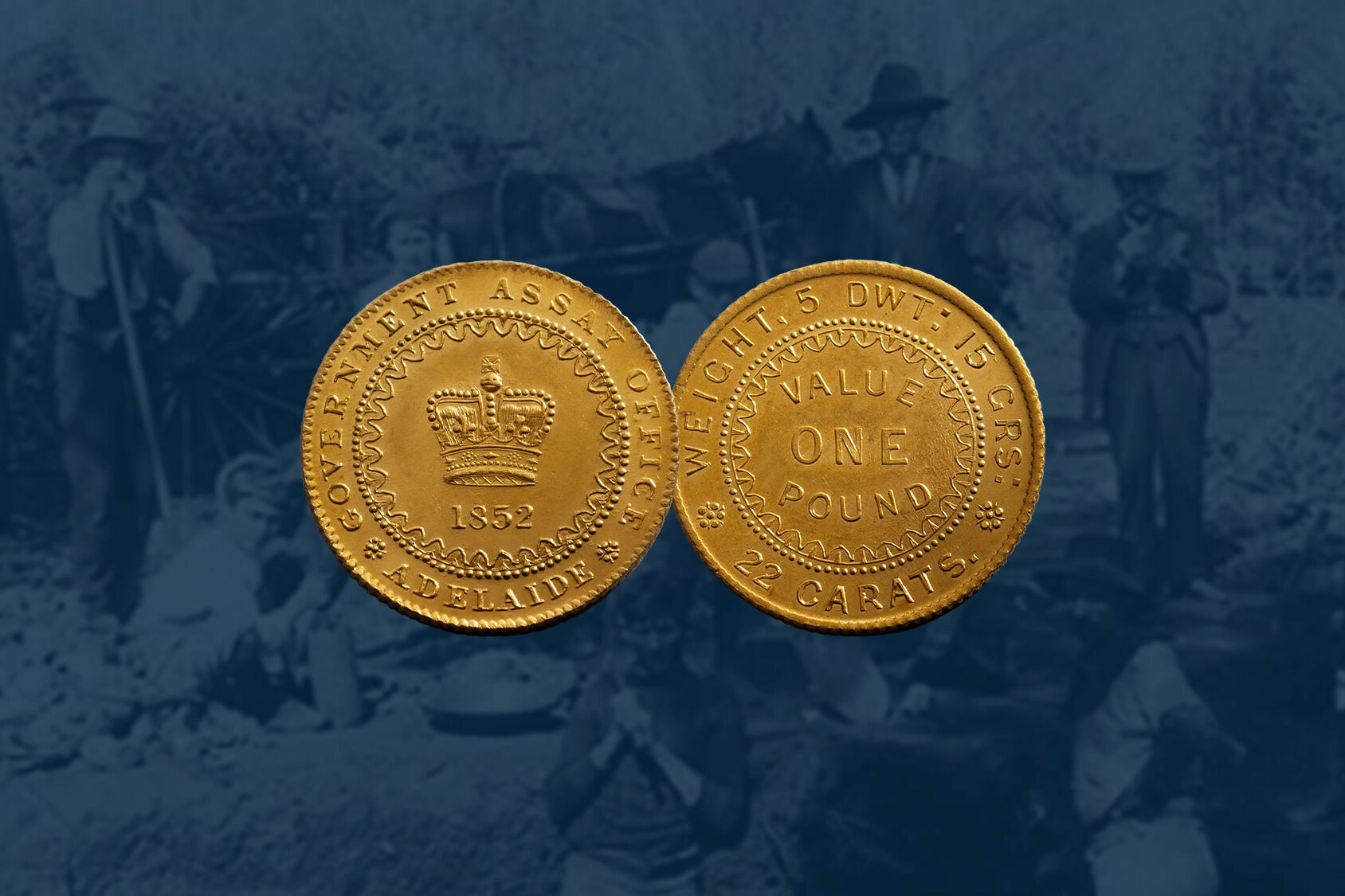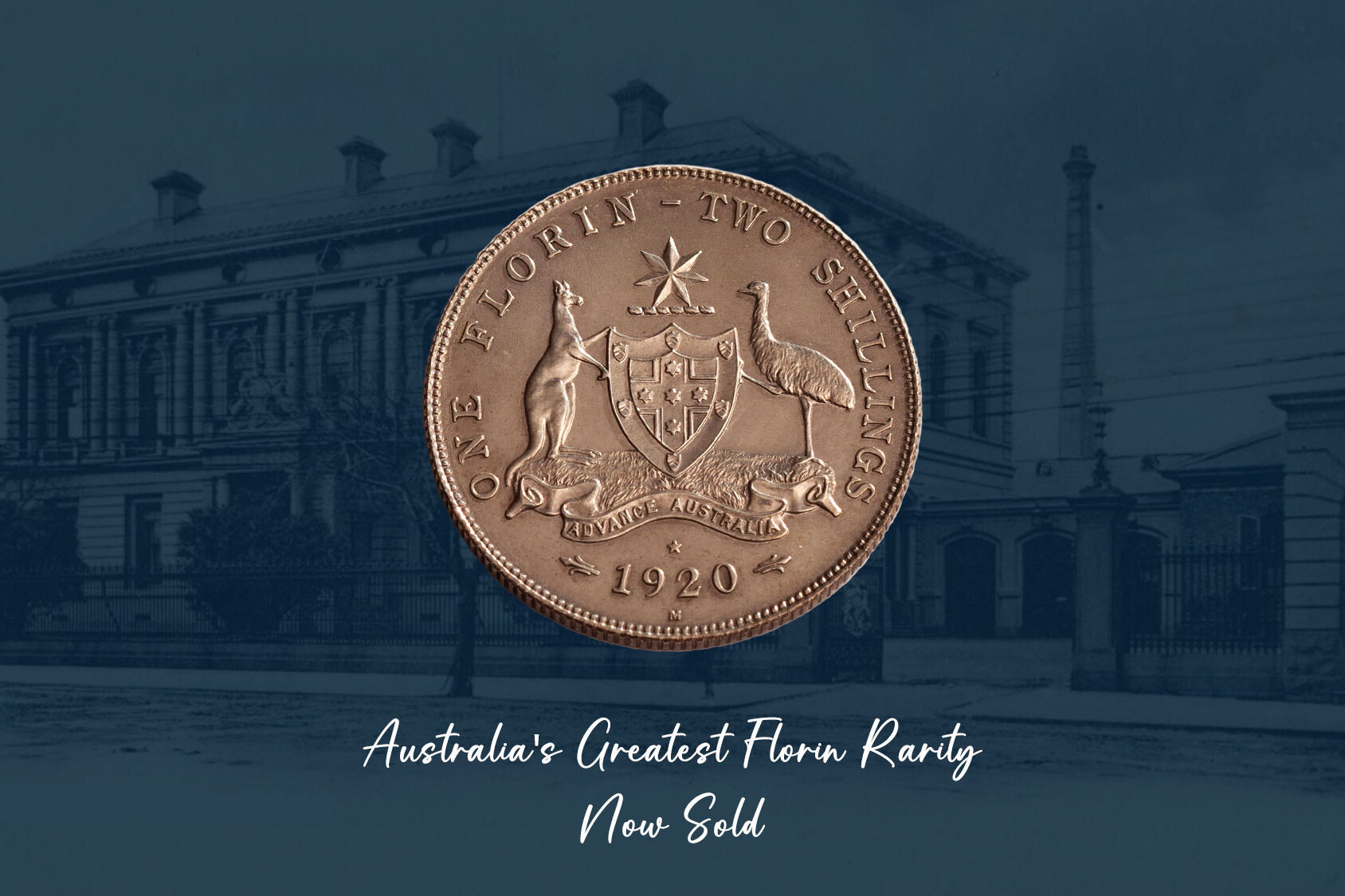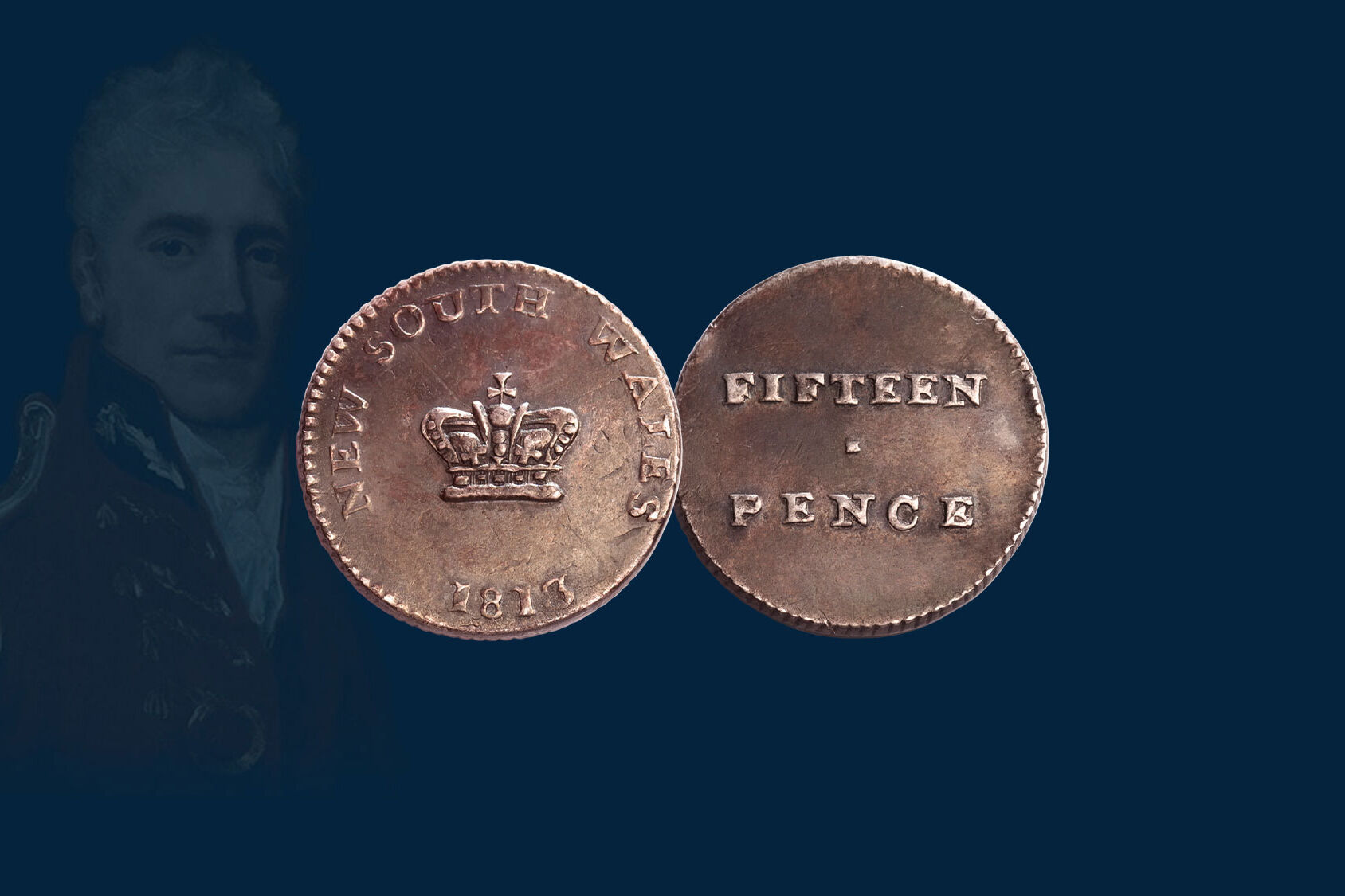Australia's proof sovereigns and proof half sovereigns are 'extremely rare'. This article quantifies those two words 'extremely rare'.
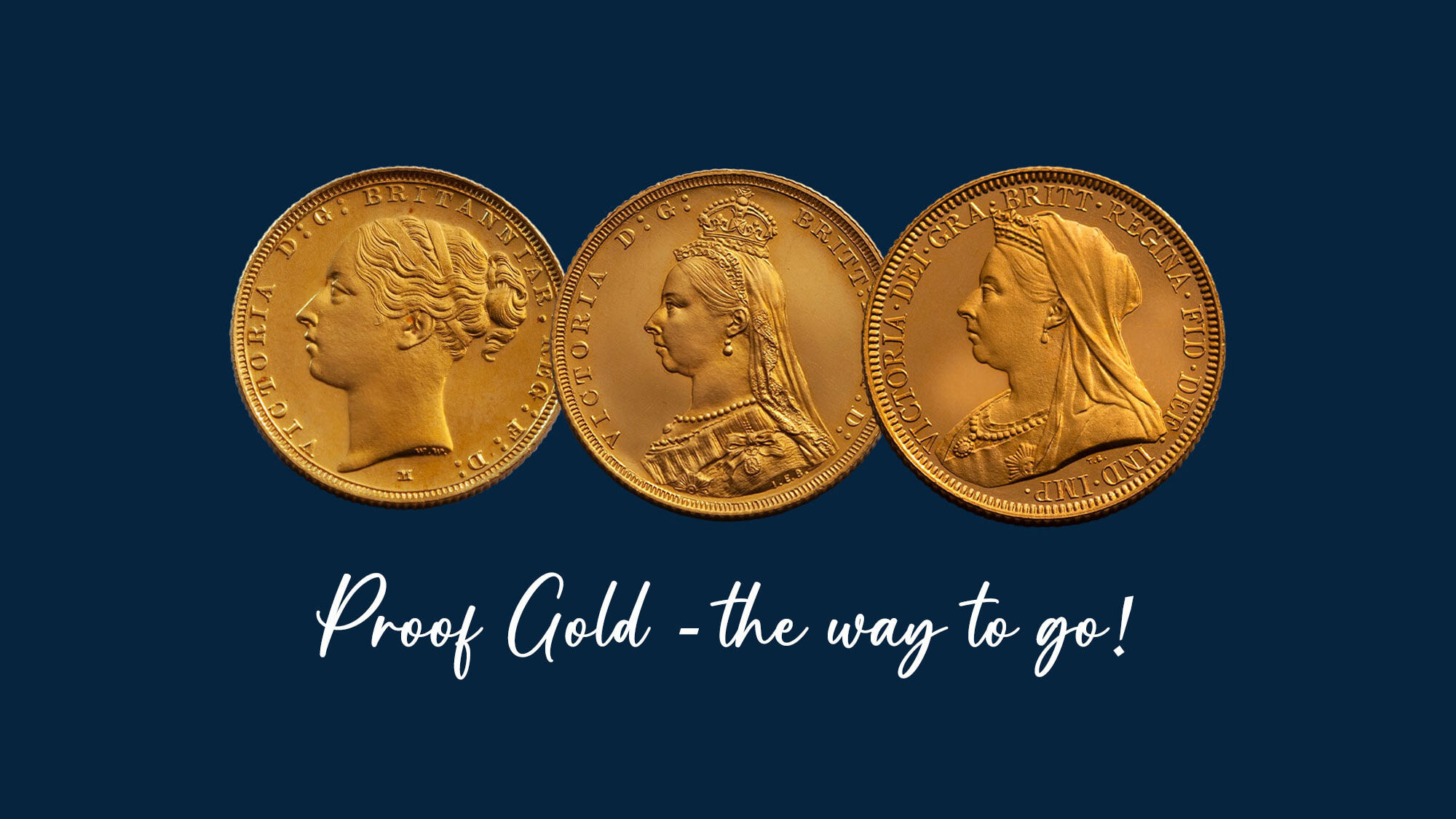
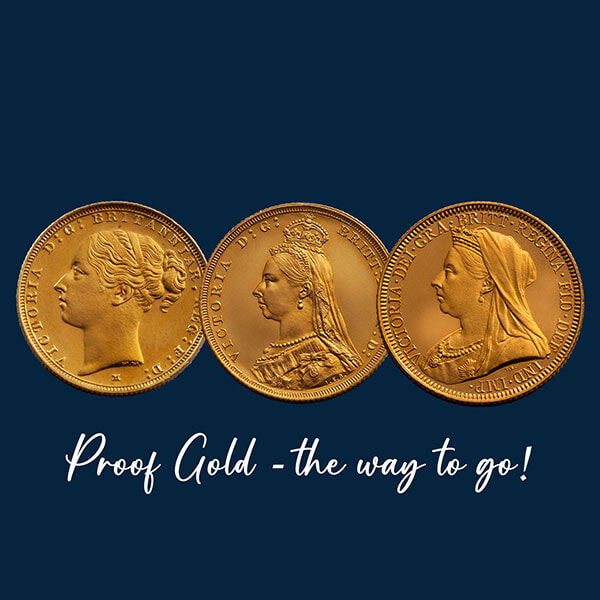
Four reasons why Proof Gold is worth owning.
Nothing compares to the allure of gold.
Particularly when it comes in the form of an Australian sovereign or half sovereign struck to PROOF quality. The coins are visually stunning, distinguished by the sharpest of detail and brilliant golden-mirror surfaces.
When you look at the proofs shown above, you can only but agree. Perfection in gold.
Proof sovereigns and proof half sovereigns have a wonderful connection to the past.
Proof sovereigns and proof half sovereigns are the story tellers, defining an era, or a year, like no other coin. The coins can also define an occasion. And a monarch. And they tend to have a connection to a prominent person, either a dignitary, a Mint Master or an influential collector.
Australia’s proof sovereigns and proof half sovereigns are exclusive.
The coins are extremely rare and we would be lucky to sight one piece at auction annually. And the reason for their incredible scarcity is that proofs were not struck every year. And of those dates that were struck as proofs, only one, perhaps two up to a maximum of three filtered their way out into the collector market.
Australia's proof sovereigns and proof half sovereigns have strong collector/investor appeal.
Collectors that buy in this area are all but guaranteed that the market will never be flooded with examples. So it is a sector that offers financial stability and has been the hunting ground of investors for decades. The sector also has strength because it has widespread support amongst the Australian market. And overseas coin markets.
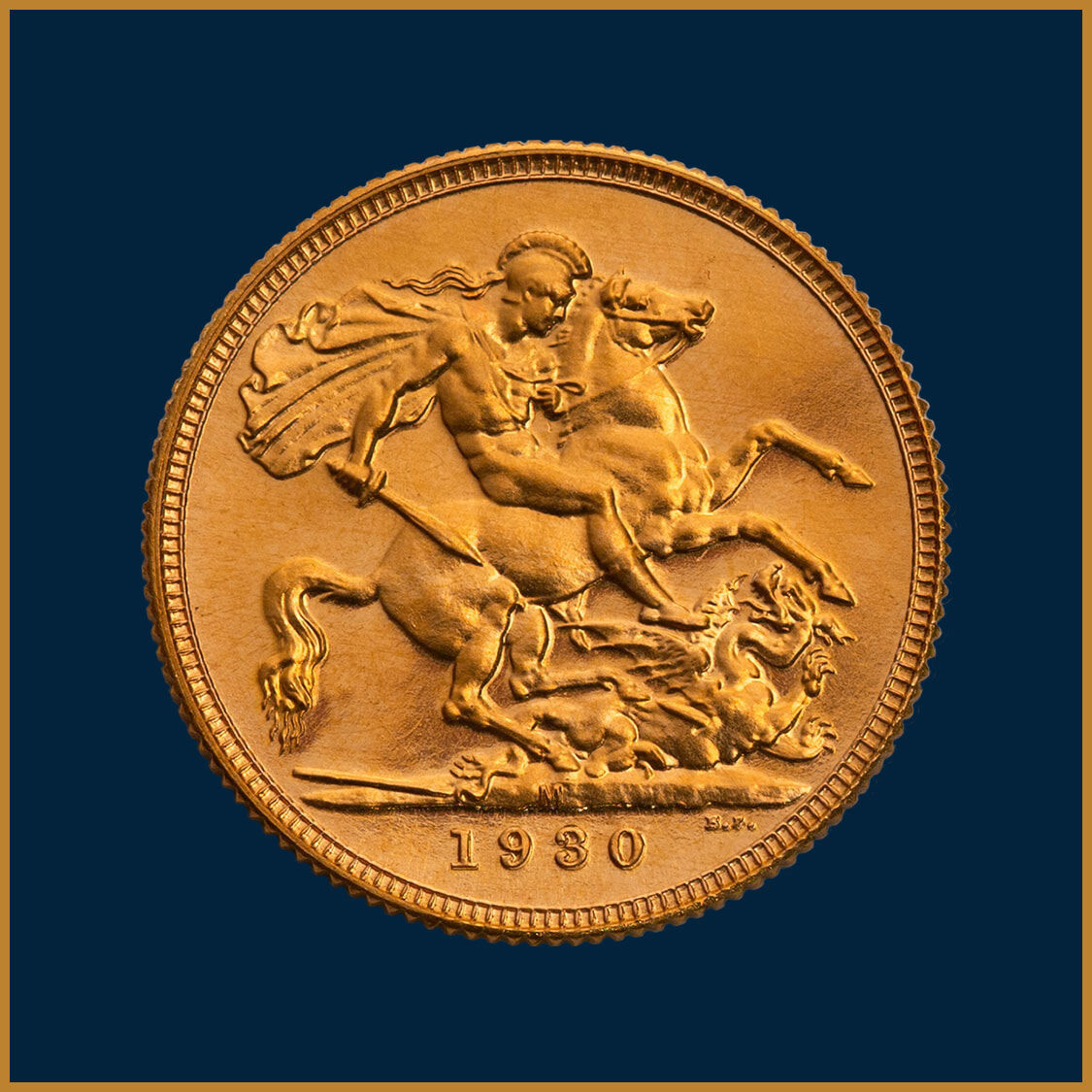
1930 Proof Sovereign
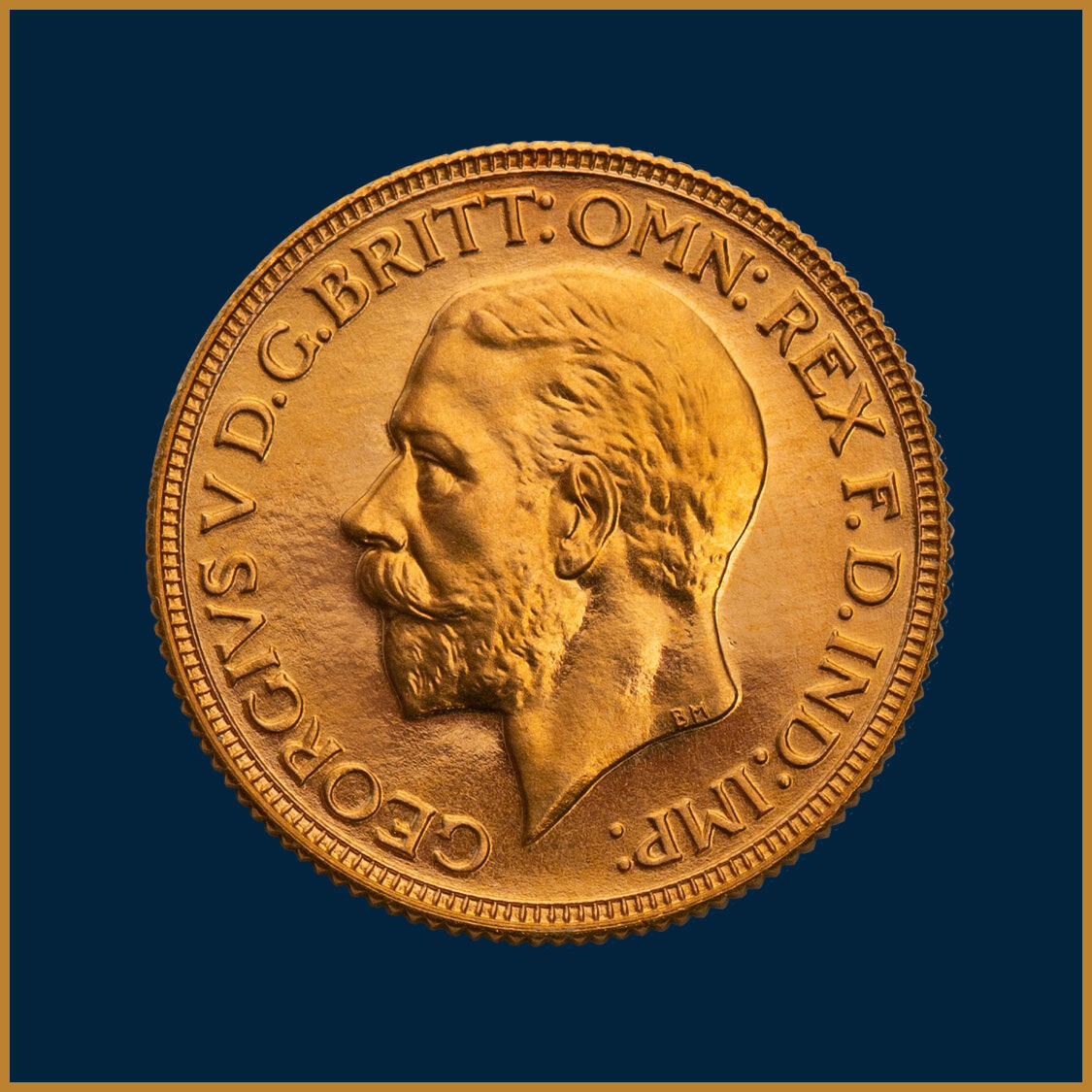
1930 Proof Sovereign
Proof Gold has Genuine Rarity.
Irrespective of the year in which they were struck, and the mint at which they were produced, Australia's proof sovereigns and proof half sovereigns are 'extremely rare'. Buying opportunities will always be severely limited. This article aims to quantify the term 'extremely rare'.
Coinworks completed an extensive study more than a decade ago on the availability of Australian proof gold. The data is reviewed and updated annually. It is noted that proof sovereigns and proof half sovereigns were struck at the discretion of the mint master and were not struck every year.
And while mint records indicate the striking of proof sovereigns and proof half sovereigns on some occasions, their existence is questioned. They have never been sighted nor is there a record of a private sale having occurred.
It is estimated that there are a maximum of one hundred proof sovereigns available to collectors, covering the complete spectrum of dates from 1853 to 1931, a span of seventy-eight years. The estimate on proof half sovereigns (1853 to 1911) is sixty coins.
Compare their availability to our industry yardstick the 1930 Penny, where 1500 to 2000 examples are believed to exist. Or even a comparison to the Kookaburra Square Penny, struck between 1919 and 1921, where two hundred examples are believed available to collectors.
And while one hundred proof sovereigns and eighty proof half sovereigns represent a minuscule number for collectors to get their hands on, there are two other considerations that further limit their availability.
As proof sovereigns and proof half sovereigns shared the same design as those coins struck for commercial usage, some of the proofs have tragically filtered their way into circulation and have been grossly mishandled, thereby marring their quality. And reducing the pool of "as struck" proof gold coins. The 1855 Sydney Mint Proof Half Sovereign, an acknowledged proof that has accidentally circulated.
The second consideration is that great coins tend to be held for the long term. The owner of "The Madrid Collection of Australian Rare Coins" held onto his proof gold coins for more than twenty years. The Spalding family for even longer. So too Tom Hadley, of Quartermaster Collection fame.
An Overview of the Proof Gold Sovereign Market
Australia’s first official gold coinage was the Sovereign, struck at the newly established Sydney Mint in 1855. It was the first coin of the realm to be minted at an overseas branch of the Royal Mint London. Half sovereigns were also struck at the Sydney Mint in 1855, a few months after the sovereign.
Australia’s last sovereign was struck in 1931 and from 1855 to 1931, eight different portraits were used on our circulating sovereigns, five of Queen Victoria, one of Edward VII and two of George V.
Three different reverse designs appeared on Australia’s sovereigns during that time, the ‘Sydney Mint’, the Shield and the Saint George and the Dragon, the last two used concurrently from 1871 to 1887.
The sovereign series has nine distinct types identified by their varying obverse and reverse designs.
Queen Victoria
• 1855 to 1856 'Sydney Mint' reverse, Type I obverse
• 1857 to 1870 'Sydney Mint' reverse, Type II obverse
• 1871 to 1887 Shield reverse, Young Head obverse
• 1871 to 1887 St George reverse, Young Head obverse
• 1887 to 1893 St George reverse, Jubilee Head obverse
• 1893 to 1901 St George reverse, Veiled Head obverse
King Edward VII
• 1902 to 1910 St George reverse, Edward VII obverse
King George V
• 1911 to 1928 St George reverse, George V Large Head obverse
• 1929 to 1931 St George reverse, George V Small Head obverse
An Overview of the Proof Gold Half Sovereign Market
Half Sovereigns were struck from 1855 until 1918. Seven different portraits were used on our circulating half sovereigns, five of Queen Victoria, one of Edward VII and one of George V.
Three different reverse designs appeared on Australia’s half sovereigns during that time, the ‘Sydney Mint’, the Shield and the Saint George and the Dragon.
The half sovereign series has seven distinct types identified by their varying obverse and reverse designs.
Queen Victoria
• 1855 to 1856 'Sydney Mint' reverse, Type I obverse
• 1857 to 1866 'Sydney Mint' reverse, Type II obverse
• 1871 to 1887 Shield reverse, Young Head obverse
• 1887 to 1893 St George reverse, Jubilee Head obverse
• 1893 to 1901 St George reverse, Veiled Head obverse
King Edward VII
• 1902 to 1910 St George reverse, Edward VII obverse
King George V
• 1911 to 1918 St George reverse, George V obverse
1853 • NO INVENTORY AVAILABLE, PHOTOS SHOWN OF RECENT SALES
On the 19 August 1853 Queen Victoria gave formal approval to establish Australia’s very first mint at or near Sydney in New South Wales. In the same year, the Royal Mint London prepared designs of Australia’s first gold coinage and manufactured dies.
The sovereign obverse design was a filleted bust of Victoria, only slightly different to that used on British sovereigns and was designed by James Wyon. The reverse design was based loosely around contemporary reverse designs of the British sixpence and shilling and was designed by Leonard Charles Wyon. Its strong point of difference to the British sovereigns the inclusion of the words 'AUSTRALIA' and 'SYDNEY MINT'.
The Half Sovereign featured the same obverse and reverse design as the sovereign.
In 1853 the Royal Mint struck samples of what the new Australian sovereigns and half sovereigns would look like. The samples were struck to proof quality.
The starting point, therefore, for collecting proof coins from Australia’s sovereign series is 1853. And that is a challenging starting point for only one Proof 1853 Sovereign and one Proof 1853 Half Sovereign are held in private hands.
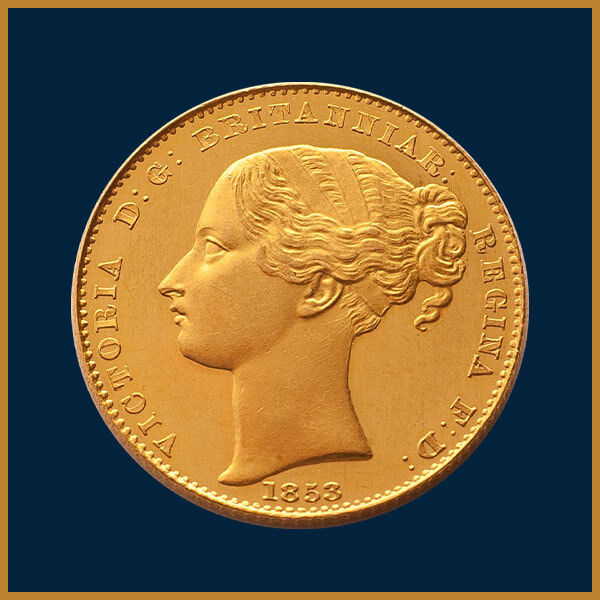

Proof 1853 Sovereign
Unique in private hands
Struck with a milled edge at the Royal Mint London, featuring the Type I 'Sydney Mint' portrait design of Queen Victoria with a band in her hair.
1855 to 1856 • INVENTORY AVAILABLE
The Royal Mint London struck proofs of the 1855 Sovereign and 1855 Half Sovereign, the coins struck with a milled edge. The Royal Mint also struck proofs of the 1856 Sovereign and Half Sovereign, but with a plain edge.
And while the 1855 and 1856 gold proofs feature the classic 'Sydney Mint' type one reverse, the coins were struck with the type two obverse, depicting Queen Victoria with a wreath of banksia leaves in her hair.
- Three Proof 1855 Sovereigns and three Proof 1855 Half Sovereigns are privately held. (It is noted that one of the half sovereigns has circulated.)
- Only one Proof 1856 Sydney Mint Sovereign is held in collector’s hands. And two of the 1856 Proof Half Sovereign.
The experience of minting coins for more than 800 years shows in the Australian proofs struck at the Royal Mint London. They are without equal and are utterly magnificent.
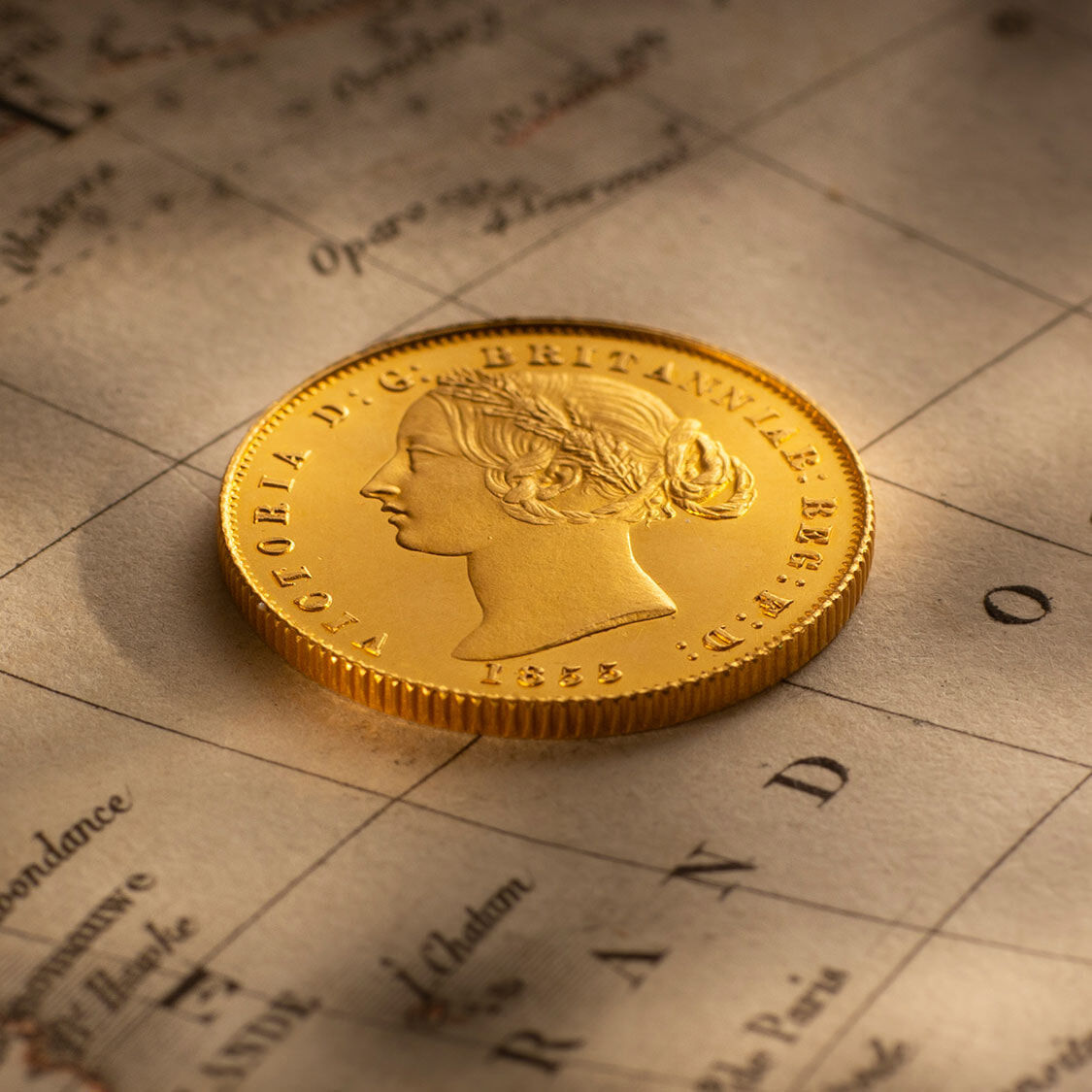
COMING IN 2025!
Unique pair of 1855 Proof Sovereign and 1855 Proof Half Sovereign
The only known pair held by a private collector
1857 to 1870 • NO INVENTORY AVAILABLE, PHOTOS SHOWN OF RECENT SALES
During the era 1857 to 1870, the Royal Mint London struck Australia's proof sovereigns and half sovereigns. But infrequently.
Proof Sovereigns were struck in only 1857 (plain edge), 1866 (milled edge) and 1870 (plain edge). Proof half sovereigns were struck in only two years, 1857 (plain edge) and 1866 (milled edge).
Three examples are known of the Proof 1857 Sovereign. Two of the Proof 1866 Sovereign. The Proof 1870 Sovereign is unique, with no other known examples privately held or housed in museums anywhere in the world.
Three examples are known of the Proof 1857 Half Sovereign Sovereign and two of the Proof 1866 Sovereign.
The premise that Proof Sovereigns provide the connection to the past is exemplified in the Proof 1866 Sovereign and the Proof 1870 Sovereign.
The two known examples of the Proof 1866 Sovereign were discovered in London in the early 1970s, the coins having been especially struck to exhibit as ‘products of New South Wales’ as part of the Colonial Mints display at the International Colonial Exhibition of 1866 and the International Exposition in Paris, 1867.
The Proof 1870 Sovereign is unique with no other examples known in private hands or museums. Its provenance can be traced back to three years after it was struck. The coin was sold at Sotheby’s London in 1873 as part of the deceased estate of civil servant, John Brodribb Bergne.

RECENT SALES
1857 Proof Sovereign
Sold August 2024 for $135,000
This colonial creation is a brilliant frosted proof, featuring the 'Sydney Mint' design. This coin is historic because it was actually struck at the Sydney Mint. (Not the Royal Mint London, as were the other Australian proofs out of this era.)
The coin is unique in private hands.
Two other examples are known, held in Government institutions. The Museum of Victoria, Melbourne. And the Biblioteque Nationale de France, Paris.
1871 to 1887 • INVENTORY AVAILABLE
By 1871 London had revoked approval for New South Wales to produce sovereigns with the distinctive 'Sydney Mint' design. The colony's sovereigns, on both obverse and reverse, were required to take on a traditional British style.
British engraver, William Wyon, removed the banksia from Queen Victoria's hair. And two new reverse designs were introduced. The St George and the Dragon design of Benedetto Pistrucci and the Shield design of J. B. Merlen. The reverse designs ran concurrently.
To make a point of difference between the London minted sovereigns and those minted at the Sydney Mint, and eventually the Melbourne and Perth Mint, a small mint mark denoted the colonial issues. ('S' for Sydney. 'M' for Melbourne. 'P' for Perth.)
The Sydney Mint's production was supplemented in 1872 when a second branch of the Royal Mint London opened in William Street, Melbourne. And while the operation of two mints, Sydney and Melbourne, and two reverse designs (St George and Shield) might create a bountiful environment for the production of proof gold coins, this was far from the case.
Only six proof sovereigns featuring the Shield reverse and Young Head portrait combination are known. Slightly more opportunities for collectors are found in the St George reverse and Young Head portrait combination. Seven proof sovereigns are known and two sovereigns struck to specimen quality.
The Shield reverse was the only design used on Australia's half sovereigns during the Young Head era. Only eight proof half sovereigns featuring the Shield reverse and Young Head portrait combination are known.
Perhaps one of the most momentous changes to occur during this era was that the nation's proof sovereigns were now struck in Australia. Between 1853 and up to and including 1870, Australia's proof sovereigns were struck at the Royal Mint London.
The Proof 1871 Sovereign and Proof 1871 Half Sovereign were the very first proof coins struck in Australia. Enhancing their value, they are unique.
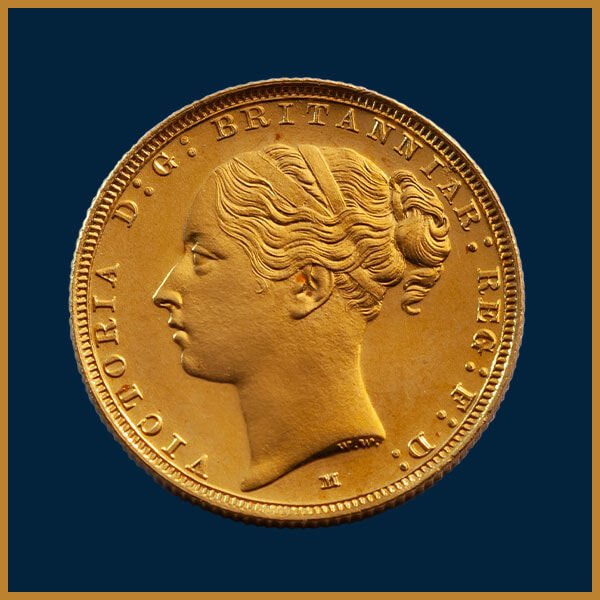
COMING IN 2025!
1886 Proof Sovereign struck at the Melbourne Mint, ex Strauss Collection.
One of two known.
Superb FDC
1887 to 1893 • INVENTORY AVAILABLE
Victoria became Queen of the British Empire on 20 June 1837 and her golden jubilee celebrated fifty years to the day, on 20 June 1887.
A new sovereign portrait was designed by (later Sir) Joseph Edgar Boehm to replace the Young Head portrait. The new design drew inordinate criticism for Victoria’s apparent scowling look and the precarious balancing of her crown. The design only lasted six years.
The year 1887 also saw the dropping of the Shield reverse on Australia's sovereigns. All Jubilee Head Proof Sovereigns were struck with only the St George and the Dragon reverse. The Shield reverse was however maintained on the half sovereign.
As with the Young Head era, we see the unpredictability of proof sovereign and half sovereign production in the Jubilee era.
The Sydney Mint opted to produce proof sovereigns in the first year of the design, 1887. And the last year of the design, 1893. The same years record production of half sovereigns.
The Melbourne Mint opted out of striking proof sovereigns in 1891 and 1892 and, of the remaining years, minimal numbers of proof sovereigns are known. Proof Half Sovereigns of the Melbourne Mint have been sighted in each of the years of the Jubilee era.
Our experiences attest to their scarcity. We have not sold a Sydney Mint Jubilee Proof Sovereign or Half Sovereign. And only two sovereigns from the Melbourne Mint, 1888 and 1889. And three half sovereigns from the Melbourne Mint, 1887, 1891 and 1893.
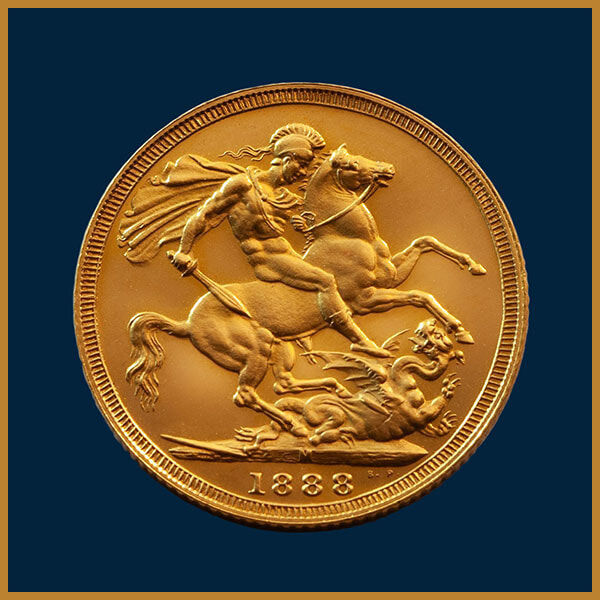
AVAILABLE NOW
1888 Proof Sovereign struck as a Coin of Record at the Melbourne Mint, ex Philip Spalding Collection
One of two sighted at auction
Superb FDC
Price $88,000
1893 to 1901 • INVENTORY AVAILABLE
It is said that British collector John G. Murdoch, had an 'in' with the Melbourne Mint during the Veiled Head era and was supplying his own gold blanks for the Melbourne Mint to produce proof sovereigns and half sovereigns specifically for him.
Thank you John G. Murdoch! For if it was not for his involvement, proof gold coins out of this era would be almost unavailable to today's collector market.
The coins are a tad more available than other sectors ... but only a tad ... making the Veiled Head Proof Sovereigns and Half Sovereigns the perfect entry point for collectors seeking to acquire a piece of proof gold.
Realistically we might sight one Veiled Head Proof Sovereign (or Half Sovereign) on the market every two years.
As the table reveals, the stand-out mint for the buyer looking for extreme rarity in the Veiled Head series, is the Sydney Mint.
Next in line for rarity is the Perth Mint that opened in 1899, six years into the Veiled Head era.
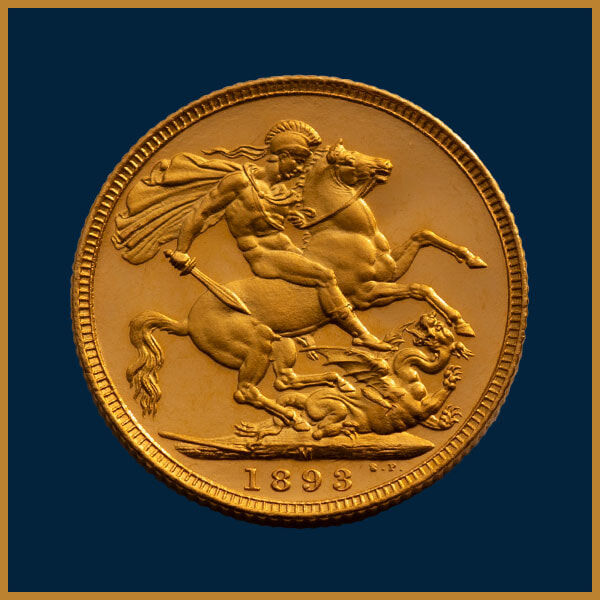
AVAILABLE NOW
1893 Proof Sovereign struck at the Melbourne Mint
Price $75,000
This 1893 Proof Sovereign is historic. It is a Coin of Record struck at the Melbourne Mint and a record of history in the truest sense.
Minted as a permanent currency record of a new portrait design of Queen Victoria, the coin is stunningly beautiful with brilliant mirror fields that bounce the light and project a wealth of design depth.
This 1893 Proof Sovereign also is extremely rare as one of two known, ex Murdoch Collection sold at Sotheby Wilkinson & Hodge London 1903.
1902 to 1910 • NO INVENTORY AVAILABLE, PHOTOS SHOWN OF RECENT SALES
The proof gold sovereigns and proof gold half sovereigns of King Edward VII are inordinately scarce. Our experiences attest to their scarcity. We have only sold two King Edward VII proof sovereigns in a career that spans fifty-plus years. And we have never sold an Edward VII proof half sovereign.
The infrequent sightings of King Edward VII gold proofs are explained by the following information.
Proof Half Sovereigns were only struck in 1902, during the reign of Edward VII.
Records indicate that Proof Sovereigns were struck in three out of the nine years, 1902, 1904 and 1910. The 1904 Proof Sovereign has never been sighted and there is doubt as to its existence.
The only known privately held examples of the Edward VII Proof Sovereign are as follows:
• The 1902 Proof Sovereign struck at the Sydney Mint. A matte proof example, ex Dangar and Hagley, sold at Spink Auctions in November 1989 for $9100.
• The industry acknowledges that a brilliant proof sovereign may also have been struck at the Sydney Mint in 1902.
• The 1902 Proof Sovereign struck at the Melbourne Mint. A brilliant proof sovereign that surfaced in 1998. The supporting memorabilia accompanying the coin indicates that it was struck by Sir George Sydenham Clarke on 3 January 1902, Sydenham Clark, the then Governor of Victoria. Unique in private hands, the coin was sold by Coinworks in 2020 to a New Zealand collector.
• The 1910 Proof Sovereign struck at the Melbourne Mint. The former property of renowned gold coin specialists Ross Pratley and Barrie Winsor. Unique in private hands, the coin was sold by Coinworks in 2014 to a private collector in Perth.
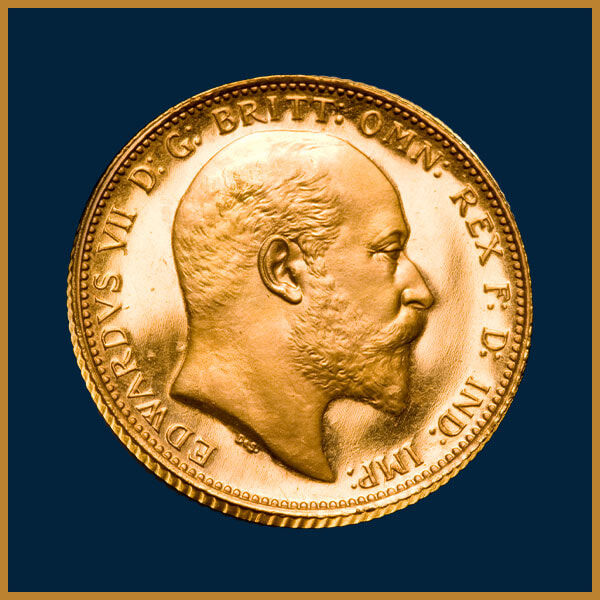
RECENT SALES
Proof 1902 Sovereign struck at the Melbourne Mint.
A unique proof striking discovered in 1998.
Sold in 2020 for $145,000.
1911 to 1931 • INVENTORY AVAILABLE
The portrait of George V appeared on Australia’s sovereigns from 1911 to 1931. The original portrait was modified in 1929 and remained until Australia struck its very last sovereign in 1931. The original design is dubbed the 'large head', the modified design the 'small head' portrait.
Three Australian mints, Sydney, Melbourne and Perth operated throughout the George V era.
The Perth Mint did not strike any proof sovereigns with the George V ‘large head’ portrait (1911 to 1928). And of the ensuing era, the Perth Mint only struck proof sovereigns in 1931, with two coins thought to exist.
The Melbourne Mint only struck proof sovereigns with the George V ‘large head’ portrait in 1911, with one believed to exist. And of the ensuing era, the Melbourne struck proof sovereigns in each of the years 1929, 1930 and 1931 with three of each thought to exist.
It is the Sydney Mint that has drawn the most attention in the George V era.
The official reports from the Mint Master of the Sydney Mint to the Royal Mint London in the George V era reveal a mint that was quite literally going out of business. As indeed it eventually did in 1926 when the Sydney Mint closed its doors and shut down its coining operations, the irony being that a mint could go broke making coins.
The most famous George V proof sovereign struck at the Sydney Mint is that minted in 1920. A unique striking, the Proof 1920 Sovereign sold at the Quartermaster Auction in 2009 for $844,000.
The only other Sydney Mint presentation strikings in this era occurred in 1922, 1923 and in 1926 the year of its closing, the sovereigns struck to specimen quality.
Proof Half Sovereigns were only struck in 1911, during the reign of George V.
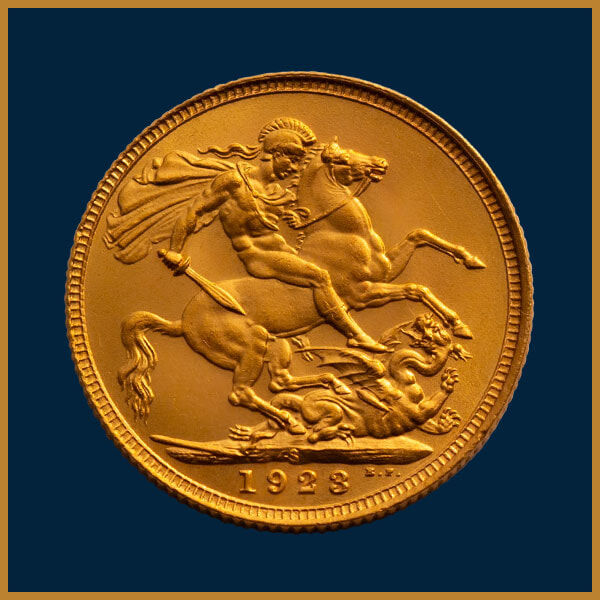
AVAILABLE NOW
1923 Specimen Sovereign struck at the Sydney Mint, featuring the standard portrait of King George V and the St George & Dragon reverse
Price $95,000
Believed unique • superb FDC
Coins of Record out of the era, 1911 to 1928, are rarely offered. Proof strikes and specimen strikes were only struck at the Sydney Mint in 1920, 1922, 1923 and 1926. The Melbourne Mint only 1911. And the Perth Mint did not strike Coins of Record at all.
Making it is one of the most difficult markets to buy into. The total market is eight coins, with dates ranging from 1911 to 1928.
AUSTRALIA'S PROOF SOVEREIGNS - FAQ
What is a ‘PROOF’ sovereign? And how does it differ from a circulating sovereign?
Unless you are a professional numismatist, a photo of a PROOF sovereign and a CIRCULATING sovereign, will almost always look the same because they share the same design. And both coins are made from 22 carat gold. But there is a vast difference in the way in which they are produced. And under close scrutiny, they have characteristics that make them very different.
Coins are struck in two different styles and for two distinctly different purposes.
Coins are struck so that they can be used in every-day transactions. We call it circulating currency - coins that circulate. Circulating coins are mass-produced in the millions in what can only be described as a factory environment and distributed through the banks at their face value.
Coins can also be struck to PROOF quality. A proof coin is a specially made coin distinguished by sharpness of detail and usually with a brilliant mirror-like surface. A PROOF coin is never intended to be used.
Proof coins are struck in highly controlled environments. And while today’s production of proof coins has been made faster with innovative machinery, in the nineteenth and twentieth centuries creating a proof coin was a painstakingly slow process. Coin blanks were hand-selected and were polished to achieve a smooth mirror shine. The dies were also specially brushed to ensure the design was perfectly executed and crisp. Because the process was arduous, proof coins were always struck in limited numbers.
So while a brand new circulating sovereign just off the production-line may sparkle it will never have the highly polished mirror surfaces of a proof coin.

1930 Proof Sovereign
Were proof sovereigns struck for collectors?
The answer to this question is NO. Proof sovereigns were not struck for the collector market.
Proofs were, in the main, struck for the mint's own archives. Or gifted to another mint. That proofs have made their way into the collector market simply reflects a mint’s decision to sell off surplus coins to fund up new acquisitions or simply improve their 'bottom-line'.
The mints struck proof sovereigns only when they felt so inclined and only then to please themselves. Or another mint. Or perhaps for a major Exhibition where they could expose their coining skills.
Proof coins were struck at the discretion of the Mint Master so there was no hard-fast rule about the regularity of the issues. Or how many were struck. The striking of proofs was very often influenced by the collecting zeal of the Mint Master. The more passionate the collecting habits of the Mint Master, the greater the chance of proofs being struck.
It is noted there were a few years in which private collectors financed the striking of proofs for their own personal collections. It is acknowledged that British collector John G. Murdoch financed the striking of gold proofs at the Melbourne Mint during the 1890s. It is said that he provided his own gold coin blanks to the mint.
There were times when proofs might also be struck for a close friend or colleague of the Mint Master. It was an accepted practice ... you just had to be well connected in numismatic circles.

1893 Proof Sovereign struck at the Melbourne Mint with the St George and the Dragon reverse and the Veiled Head portrait shown above.
Why were proof sovereigns struck?
The Sydney Mint, Melbourne Mint and Perth Mint were established as branches of the Royal Mint London. As such, they followed the traditions of their 'master' in striking proof coins.
When a mint struck a proof sovereign, its intention was to create a single, golden masterpiece. Coining perfection. Perfection in the design, highly detailed, expertly crafted. Perfection in the fields, achieved by hand selecting unblemished blanks, polished to create a mirror shine. Perfection in the edges to encase the design … exactly what a ‘picture frame does to a canvas’.
A proof coin was never intended to be used in every-day use, tucked away in a purse. Or popped into a pocket.
Proof coins were struck to be preserved in the mint's archives as a record of Australia’s coining history, time-capsuled for future generations.
Proof coins were also used to showcase a mint’s coining skills, to display at major worldwide Exhibitions or sent to other mint’s and public institutions.

1923 Specimen Sovereign struck at the Sydney Mint featuring the portrait of George V.
Were there any rules regarding the striking of proofs?
Proof sovereigns were struck at the discretion of the Mint Master so there was no hard-fast rules about the regularity of the issues. Or the mintages.
The Mint Master decided if and when proof sovereigns would be struck and how many were to be struck.
The prime role of the mints was to convert gold into circulating sovereigns, the striking of proofs outside those parameters. Given that proof coining was also a very labour intensive and time consuming process, minimal numbers of proofs were struck.
It is noted that in many years, proof sovereigns were not struck.
It is also noticed that their striking was very often influenced by the collecting zeal of the Mint Master.
The more passionate the collecting habits of the Mint Master, the greater the chance of proofs being struck.
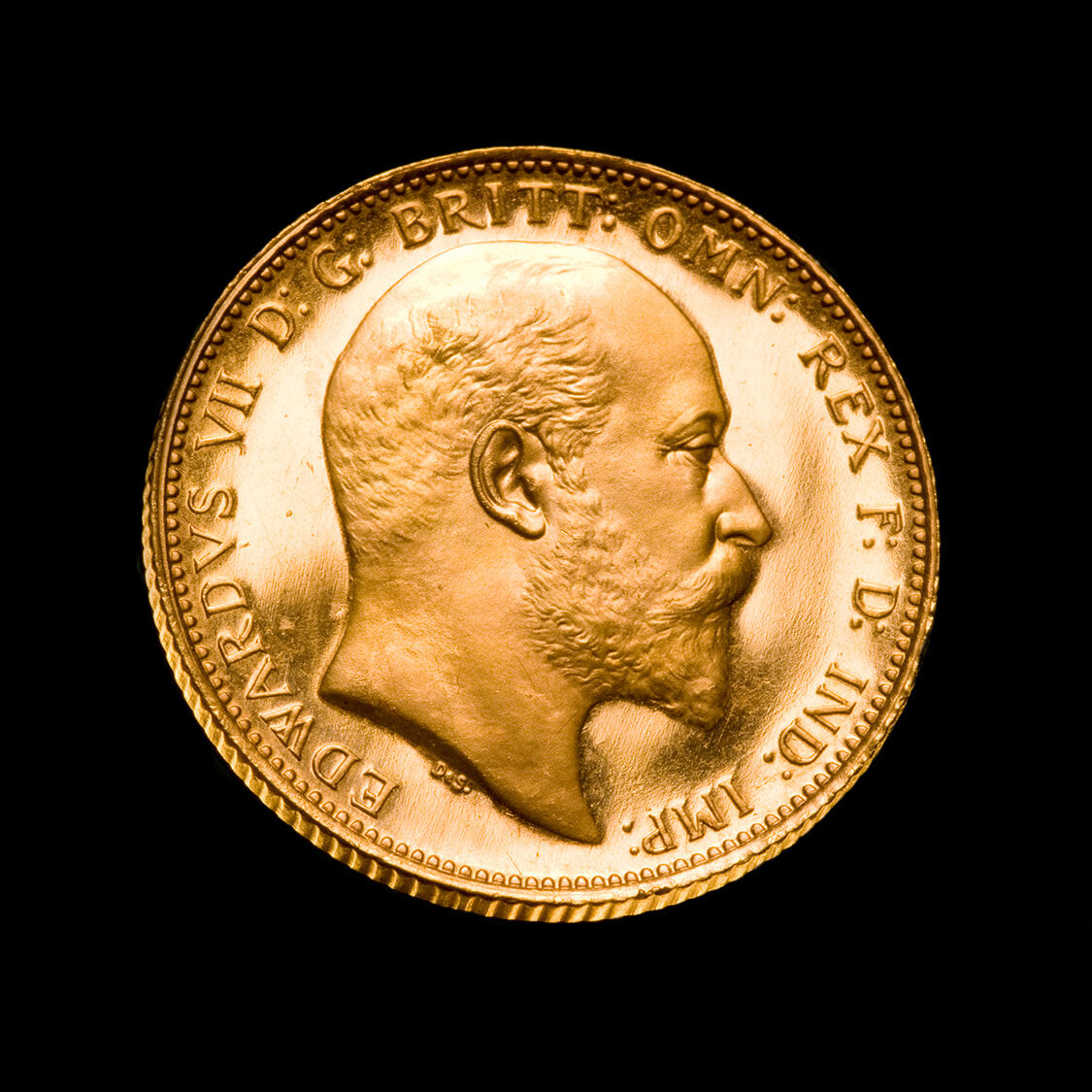
Unique Proof 1902 Sovereign struck at the Melbourne Mint with Edward VII obverse portrait and St George and the Dragon reverse.
Is proof gold always available?
While it is obvious that some designs appear to be more ‘readily available’ than others, there is no implication that they are popping up every year.
As professionals we can wait years to be in a position of offering a single proof gold sovereign.
The Veiled Head era offers collectors more opportunities than any other era and yet we note just how few examples we have sold.
In our view the offering of a proof sovereign is an opportunity, be it Veiled Head, Jubilee or otherwise.
Grab the coin and if something more appealing comes along a few years later, sell it back to make a substantial down-payment on the new acquisition.
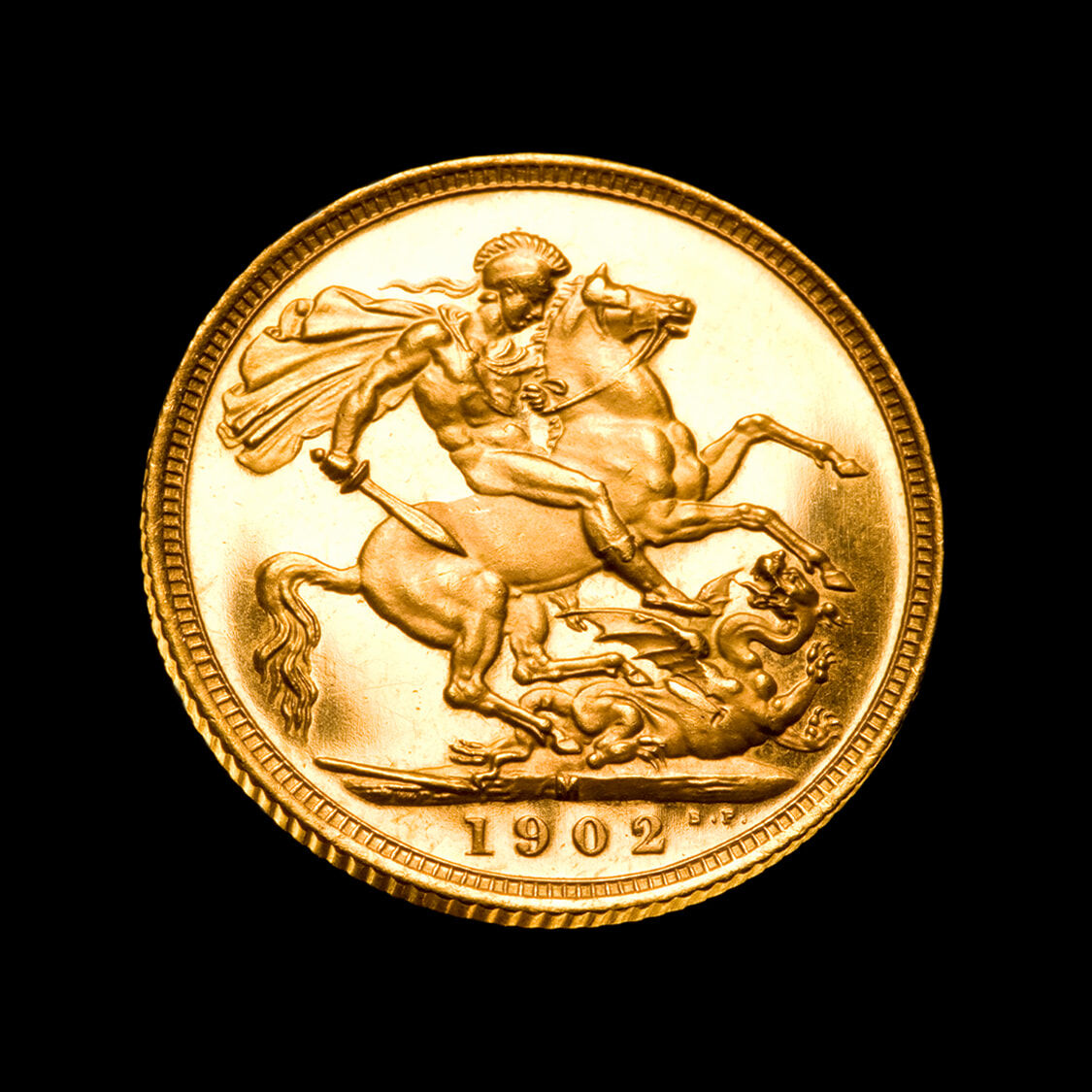
Unique Proof 1902 Sovereign struck at the Melbourne Mint with Edward VII obverse portrait and St George and the Dragon reverse.
Shop Coinworks
© Copyright: Coinworks
